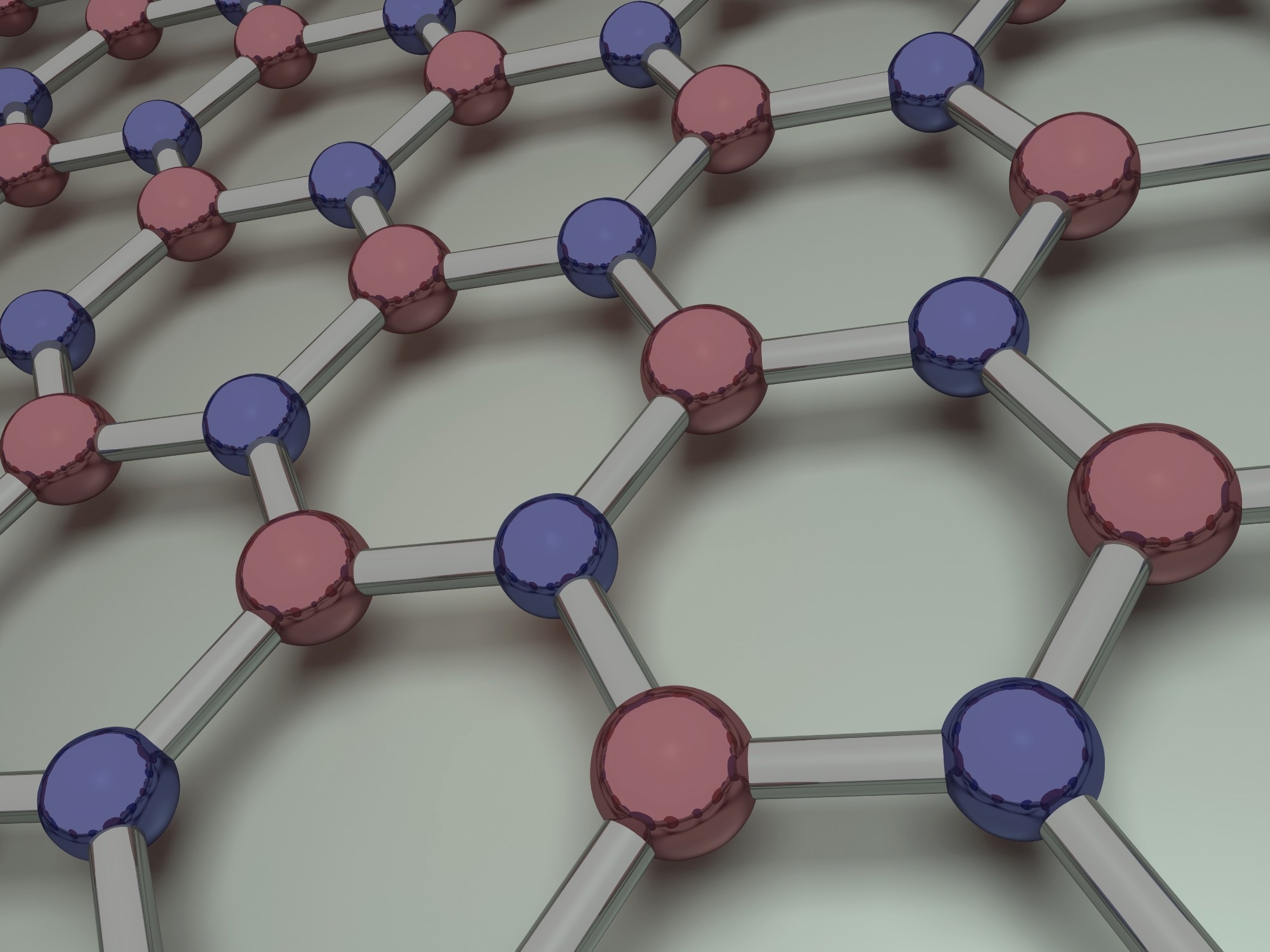An international research team led by NYU Tandon School of Engineering and KAIST has developed a novel approach for identifying and characterizing atomic-scale defects in hBN, a 2D material called "white graphene" due to its exceptional properties. The study was published in ACS Nano.

Image credit: ogwen/Shutterstock.com
This development could accelerate the creation of quantum technologies and next-generation electronics.
According to the team, they identified when boron atoms in hexagonal boron nitride (hBN) crystals were being replaced by individual carbon atoms. Listening to the electronic “noise” in specially made transistors—similar to hearing a whisper in a quiet room—made this discovery possible.
The study was chosen as the cover story for the October 22, 2024, issue of ACS Nano.
In this project, we essentially created a stethoscope for 2D materials. By analyzing the tiny and rhythmic fluctuations in electrical current, we can 'perceive' the behavior of single atomic defects.
Davood Shahrjerdi, Study Corresponding Author and Associate Professor, Tandon's Electrical and Computer Engineering Department, New York University
Shahrjerdi is a faculty member at NYU WIRELESS and the director of the NYU Nanofabrication Cleanroom (NanoFab), which opened last year. Kim is a professor of electrical engineering at the Korea Advanced Institute of Science and Technology (KAIST).
Shahrjerdi and Kim also oversee collaborations in the NYU-KAIST Next-Gen Semiconductor Devices and Chips research group as they are affiliated faculty at the NYU-KAIST Global Innovation and Research Institute.
The President of South Korea officially launched the NYU-KAIST partnership at NYU in September 2022. This historic collaboration, which currently includes over 200 faculty members from both institutions, brings together the unique strengths of both universities to drive advances in research and education.
In scientific circles, single-crystal hBN has emerged as a wonder material with the potential to transform fields ranging from unconventional electronics to quantum technology.
Due to its exceptional insulating qualities and atomically thin structure, hBN is a perfect medium for exhibiting unusual physical phenomena that are not achievable with traditional materials. hBN's atomic defects can weaken its electronic characteristics, sometimes in ways that could be used to develop quantum technologies.
The NYU team used layers of hBN sandwiched between a few-layer thin molybdenum disulfide, another 2D semiconducting material, to create a transistor. They observed distinct jumps in the current passing through the transistor by applying precise electrical voltages and cooling this device to cryogenic temperatures.
These jumps, called random telegraph signals, happen when hBN defects catch and release electrons. By closely examining these signals at various voltages and temperatures, the team identified the defects' energy levels and spatial locations.
It is like we have developed a microscope that can 'see' individual atoms, but instead of light, we're using electricity.
Zhujun Huang, Study First Author and Nanofab PostDoctoral Researcher, Tandon's Electrical and Computer Engineering Department, New York University
The team went on to clarify the atomistic origins of the experimental observations using sophisticated computer simulations. The combination of theory and experiment showed that the defects in the hBN crystal structure are carbon atoms occupying positions that boron atoms should occupy.
Sharhrjerdi and Kim added, “Understanding and controlling the defects in 2D materials could have significant implications for the future of electronics and quantum technologies. For example, we might be able to create more perfect quantum material platforms for the discovery of new physics or single-photon emitters for secure communications.”
The CHIPS and Science Act's objectives for semiconductor innovation are in line with this study, which broadens NYU Tandon's growing portfolio in quantum materials and device technologies. Previous studies showed the potential of low-disorder quantum materials in devices combined with superconductors.
The NYU Nanofab prototyping facility, located in the Northeast Regional Defense Technology Hub and one of eight U.S. Microelectronics Commons hubs, advances the field. The Nanofab serves the NYU and regional research communities and focuses on integrating quantum materials and devices.
Ryong-Gyu Lee, Jiyoon Song, and Jeongwon Lee, from the School of Electrical Engineering at KAIST; Edoardo Cuniberto and Abdullah Alharbi, both Ph.D. alumni at NYU Tandon’s ECE Department; Kim Kisslinger from the Center for Functional Nanomaterials at Brookhaven National Laboratory; Takashi Taniguchi from the Research Center for Materials Nanoarchitectonics at the National Institute for Materials Science in Tsukuba, Japan; and Kenji Watanabe from the Research Center for Electronic and Optical Materials, also at the National Institute for Materials Science in Tsukuba, Japan are the other study authors.
The study was funded in the United States by the US Department of Energy’s Center for Functional Nanomaterials at Brookhaven National Laboratory and the National Science Foundation.
Contributions from South Korea included computational resources from the KISTI Supercomputing Center, the BK21 Plus program at KAIST, and several grants from the National Research Foundation of Korea. The World Premier International Research Center Initiative of MEXT and the Japan Society for the Promotion of Science KAKENHI provided Japanese support.
Journal Reference:
Huang, Z. et. al. (2024) Characterizing Defects Inside Hexagonal Boron Nitride Using Random Telegraph Signals in van der Waals 2D Transistors. ACS Nano. doi.org/10.1021/acsnano.4c06929